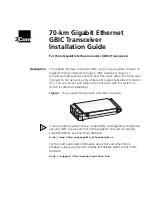
INTRODUCTION
WBPEEUI110504A0
3 - 1
SECTION 3 - INSTALLATION
INTRODUCTION
This section aids in all levels of installation. The goal is to pro-
vide clear procedures for placing the transmitter into service.
NOTE: Refer to
Installing a 4 to 20 mA Transmitter in a Hazard-
ous Location and ANSI/ISA RP12.6, Installation of Intrinsically
Safe Systems for Hazardous (Classified) Locations when
applicable.
UNPACKING AND INSPECTION
1. Check for any obvious damage to the carton or its con-
tents. If damage is evident, notify the carrier, and a sales
representative.
2. Remove any loose packing from the carton.
3. Carefully remove the transmitter from the carton.
4. Inspect the nameplate to verify the unit received matches
the desired function.
5. If the transmitter is to be stored prior to installation, pack
it in the original container, if possible. Store in an area free
from corrosive vapors and extremes in temperature and
humidity. Install the covers and seal all wiring inlets.
NOTE: Storage temperatures must not exceed the limits listed in
Table
.
LOCATION CONSIDERATIONS
Because of process and economic considerations, pressure
transmitters must often be installed in harsh environments.
The transmitter should, however, be located so as to minimize
the effects of temperature gradients and fluctuations, and to
avoid shock and vibration.
When mounting the transmitter, leave ample clearance to open
the cover of the electronics housing (Fig.
). Wire the trans-
mitter with a twisted, shielded pair cable for best results.
Avoid sources of RFI (radio frequency interference). Refer to
Table
for the A, B, and C dimensions shown in Figure
.
SETUP AND PHYSICAL INSTALLATION
The quality of the measurement depends on the correct instal-
lation of the transmitter. This includes the orientation, pipe
Содержание Platinum standard Series
Страница 1: ......
















































